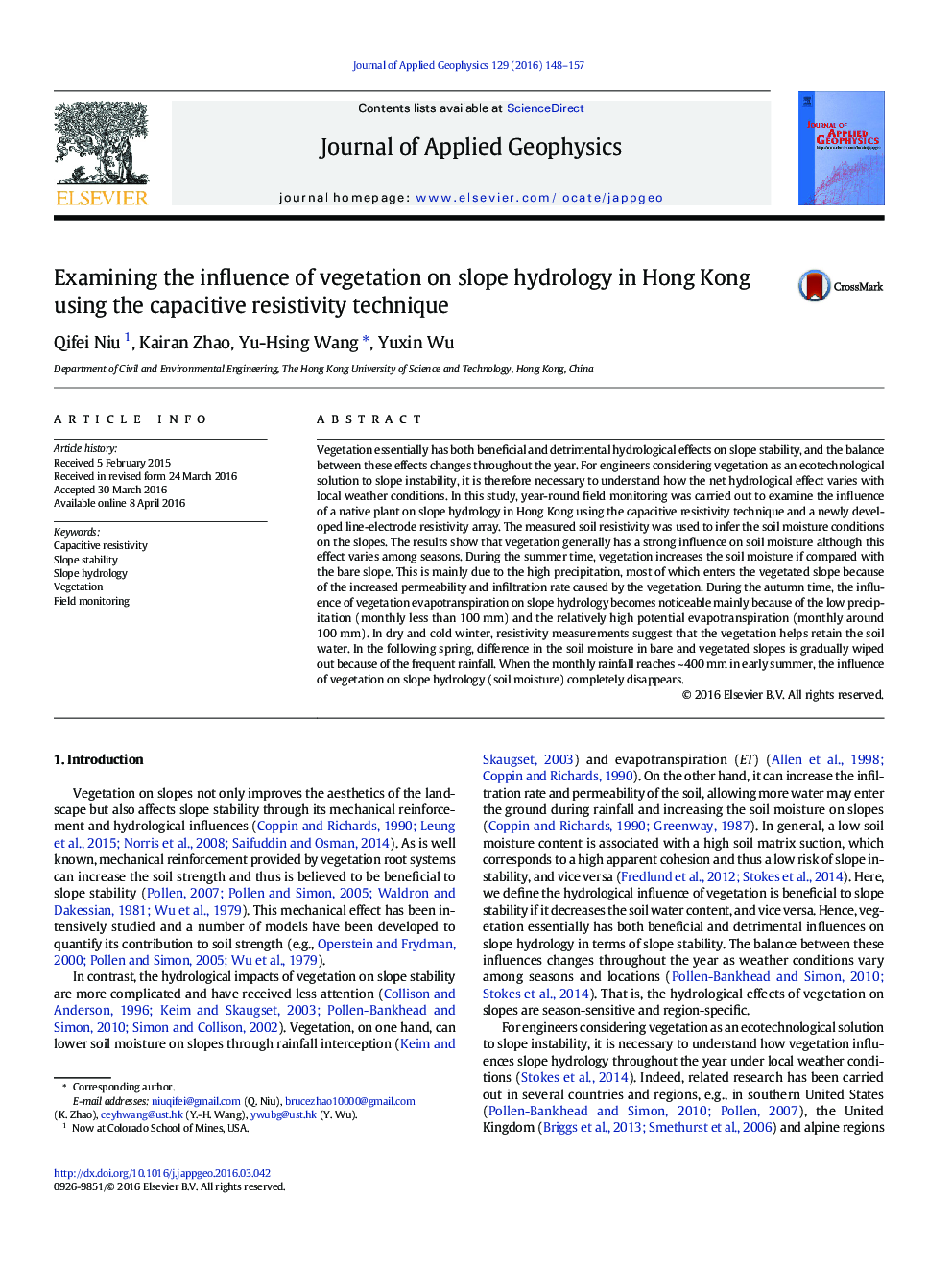| کد مقاله | کد نشریه | سال انتشار | مقاله انگلیسی | نسخه تمام متن |
|---|---|---|---|---|
| 4739837 | 1641122 | 2016 | 10 صفحه PDF | دانلود رایگان |
• The influence of vegetation on slope hydrology was studied in Hong Kong.
• Field monitoring was carried out using the capacitive resistivity technique.
• The influence of vegetation on soil moisture on slopes varies among seasons.
Vegetation essentially has both beneficial and detrimental hydrological effects on slope stability, and the balance between these effects changes throughout the year. For engineers considering vegetation as an ecotechnological solution to slope instability, it is therefore necessary to understand how the net hydrological effect varies with local weather conditions. In this study, year-round field monitoring was carried out to examine the influence of a native plant on slope hydrology in Hong Kong using the capacitive resistivity technique and a newly developed line-electrode resistivity array. The measured soil resistivity was used to infer the soil moisture conditions on the slopes. The results show that vegetation generally has a strong influence on soil moisture although this effect varies among seasons. During the summer time, vegetation increases the soil moisture if compared with the bare slope. This is mainly due to the high precipitation, most of which enters the vegetated slope because of the increased permeability and infiltration rate caused by the vegetation. During the autumn time, the influence of vegetation evapotranspiration on slope hydrology becomes noticeable mainly because of the low precipitation (monthly less than 100 mm) and the relatively high potential evapotranspiration (monthly around 100 mm). In dry and cold winter, resistivity measurements suggest that the vegetation helps retain the soil water. In the following spring, difference in the soil moisture in bare and vegetated slopes is gradually wiped out because of the frequent rainfall. When the monthly rainfall reaches ~ 400 mm in early summer, the influence of vegetation on slope hydrology (soil moisture) completely disappears.
Journal: Journal of Applied Geophysics - Volume 129, June 2016, Pages 148–157
